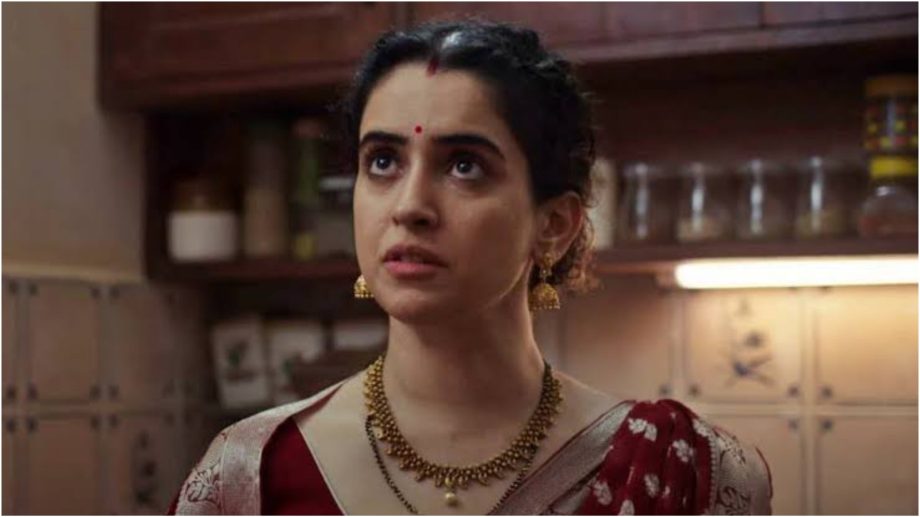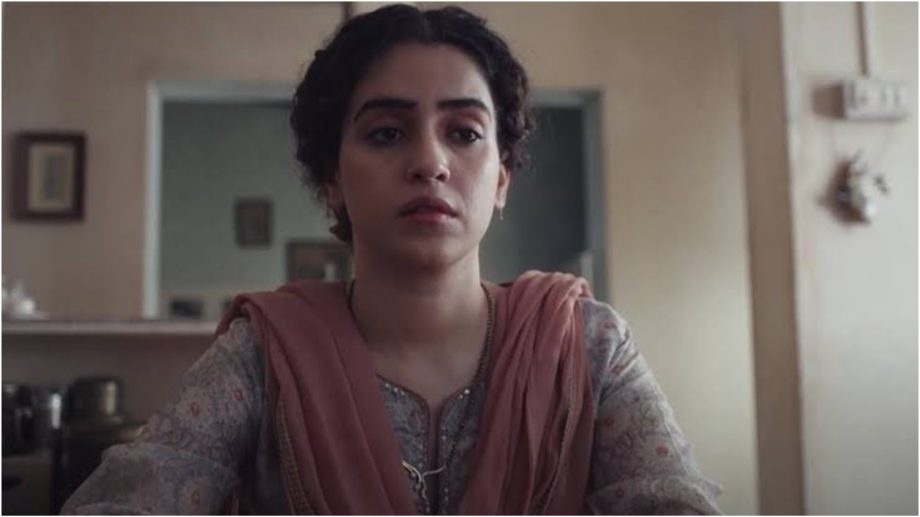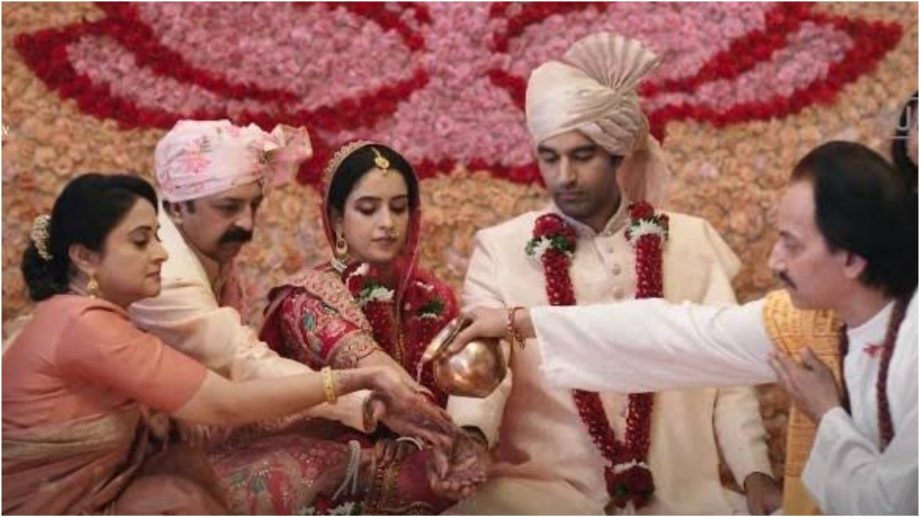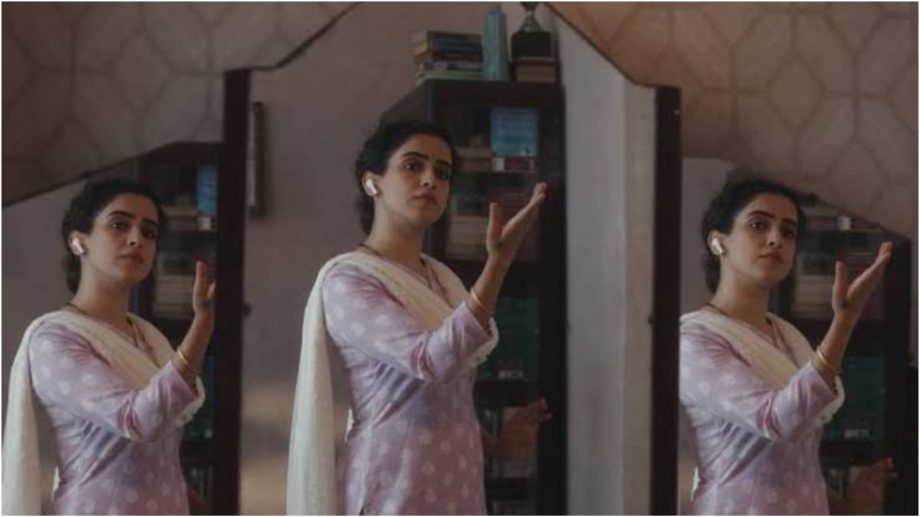Mrs.
Rating – *** (3/5)
Cast: Sanya Malhotra, Nishant Dahiya, Kanwaljit Singh & more
Directed by: Arati Kadav
Streaming on Zee5, 7th February 2025 onwards
Patriarchy is such an omnipresent force that merely broaching the subject ignites debate, with many men refusing to acknowledge its existence or, worse, its staggering extent. Back in 2021, Malayalam cinema delivered an unfiltered, searing critique of entrenched gender roles with The Great Indian Kitchen (2021).
What initially seemed like an unassuming depiction of a conventional Indian household stealthily transformed into a gut-wrenching exposé of domestic drudgery and silent servitude. Jeo Baby wielded an unsettling simplicity, crafting an experience so universally relatable yet despairingly inescapable, making viewers reckon with an institution that has remained largely unchallenged.
Now, stepping into its formidable shoes comes Mrs., the Hindi adaptation helmed by Arati Kadav, featuring Sanya Malhotra as Richa, Nishant Dahiya as Diwakar, and Kanwaljit Singh as Papaji. Though nearly a frame-for-frame recreation, Mrs. carves its own identity by subtly recalibrating the storytelling approach.

Recognizing that the slow-burn agony of its predecessor might not be as immersive for a Hindi-speaking audience, Kadav accelerates the unraveling of oppression. We are introduced to Malhotra’s Richa in her pre-marriage days, thriving as a successful dancer with her own troupe.
This setup instantly fosters empathy for her, making the transition from an independent artist to a stifled homemaker feel all the more jarring. The impact is immediate, beginning from her wedding night itself, where the seemingly minuscule adjustments start accumulating into something far more insidious.
Despite its minor missteps, Mrs. remains a commendable effort, capturing the claustrophobia, exhaustion, and silent rebellion that define the lives of countless women.
What makes Mrs. compelling is not just its overarching theme but the microaggressions it stitches seamlessly into its narrative. Casual yet loaded remarks like “Jo ye maa nahi sikha paayi, voh nayi maa sikha legi” or Diwakar’s condescending mockery of dance as a profession subtly reinforce the power dynamics at play.
Richa’s father-in-law’s inability to acknowledge her relentless efforts, instead nitpicking every imperfection, becomes an extension of the systemic erasure of women’s labor. Perhaps the most disquieting detail is how Richa is reduced to nothing more than a vessel for Diwakar’s pleasure—sex stripped of any notion of intimacy, care, or mutual gratification. These moments unfold with a quiet brutality, making Mrs. a film that speaks volumes without raising its voice.

Sanya Malhotra is the film’s beating heart. She brings an innocence essential to Richa’s character, seamlessly transitioning from a hopeful newlywed eager to fulfill expectations to a woman slowly unraveling under the weight of domestic subjugation.
Malhotra is one of the most emotionally evocative performers of her generation, and her ability to cry on screen—expressing devastation laced with suffocated rage—makes her portrayal hauntingly real. Nishant Dahiya and Kanwaljit Singh deliver stellar performances as the husband and father-in-law, their characters devoid of overt villainy yet embodying the insidious banality of patriarchy.
Their actions are not overtly malicious, which is what makes them so disturbingly authentic. The viewer is left in a moral quandary—disliking them feels like disliking the social conditioning that shaped them, forcing introspection on how deeply these toxic norms are ingrained in all of us. Kadav ensures that Mrs. does not demonize men outright; instead, it recognizes the systemic nature of oppression, implicating both men and women who perpetuate and internalize these expectations.

However, for all its triumphs, Mrs. falters in a few key areas. Unlike The Great Indian Kitchen, which thrived on restraint, this adaptation leans towards a more pronounced confrontation. The film’s latter half, in particular, becomes a little too binary in its portrayal of gender conflict, forgoing the subtleties that made the original so powerful. Another glaring issue is the absence of the mother-in-law in the aftermath of the climactic outburst.
Given how integral her presence was earlier, her sudden disappearance feels like an unfinished narrative thread. Additionally, certain segments—especially in the first half—carry a rushed treatment, reducing the slow-building dread that was so effective in the Malayalam version.

Despite its minor missteps, Mrs. remains a commendable effort, capturing the claustrophobia, exhaustion, and silent rebellion that define the lives of countless women. It might not possess the same quiet devastation as its predecessor, but it still packs enough punches to make audiences squirm in recognition.
Nuanced or not, Mrs. is a necessary watch, a film that holds up a mirror to the society we live in—one that many will see themselves reflected in, whether they like it or not.


